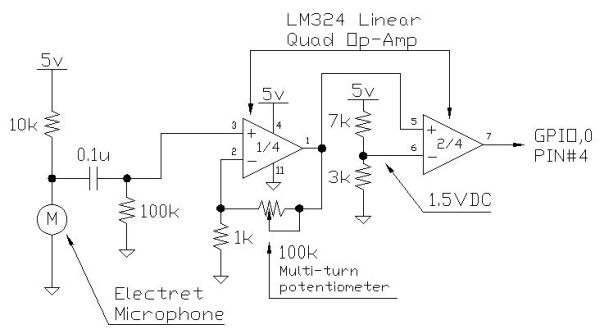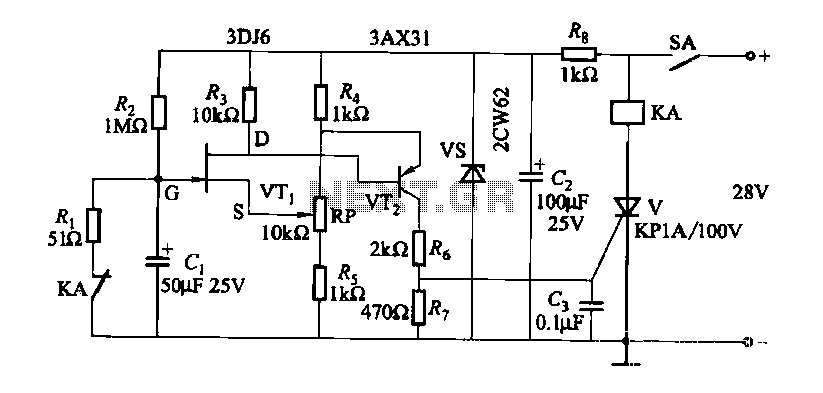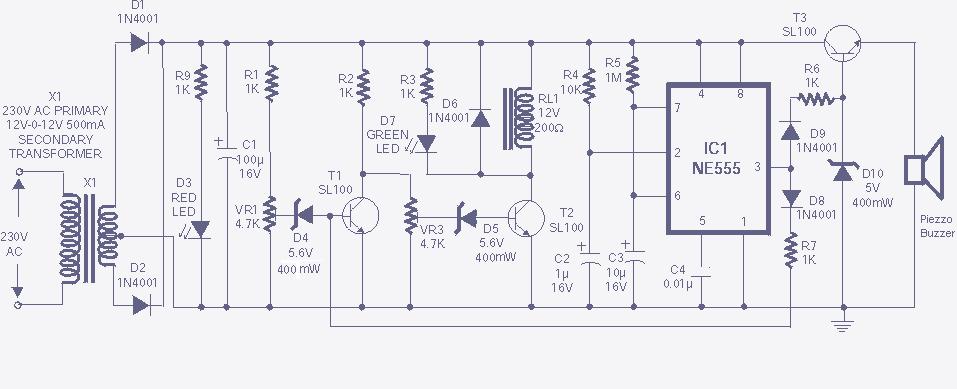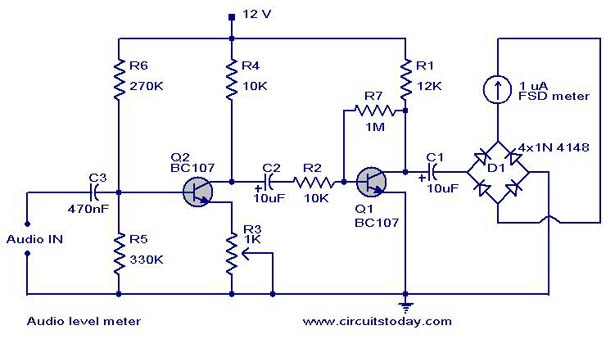
10 Amp 13.8 Volt Power Supply circuit
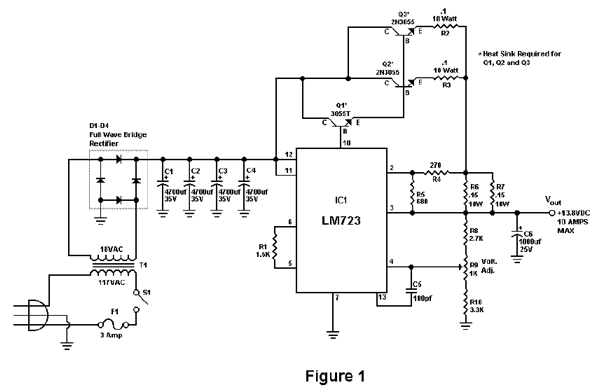
The circuit is designed to deliver a surge current of 12 amps, offering performance that meets or surpasses that of typical commercial units. Additionally, it incorporates a current limiting feature, providing a level of reliability that is superior to many standard commercial systems.
The circuit operates by utilizing a robust power supply capable of handling the specified surge current while maintaining stable performance under varying load conditions. The current limiting feature is achieved through a combination of resistive and active components that monitor the output current. When the current exceeds the predetermined threshold, the circuit automatically reduces the output, preventing potential damage to both the load and the power supply.
Key components of this circuit may include a high-current MOSFET or transistor, which serves as the main switching element, allowing for efficient control of the output current. A current sensing resistor is placed in series with the load to provide real-time feedback on the current flow. This feedback is processed by a control circuit, which could be implemented using an operational amplifier or a dedicated current sensing IC.
The design should also include protective elements such as fuses or circuit breakers to further enhance reliability and safety. Capacitors may be employed for filtering purposes, smoothing out voltage spikes and ensuring stable operation during transient conditions.
Overall, this circuit design not only meets the required current specifications but also emphasizes reliability and safety through its advanced current limiting mechanism.The circuit will give us amps (12 amps surge) with performance that equals or exceeds any commercial unit. The circuit even has a current limiting feature which is a more reliable system than most commercial units have..
🔗 External reference
The circuit operates by utilizing a robust power supply capable of handling the specified surge current while maintaining stable performance under varying load conditions. The current limiting feature is achieved through a combination of resistive and active components that monitor the output current. When the current exceeds the predetermined threshold, the circuit automatically reduces the output, preventing potential damage to both the load and the power supply.
Key components of this circuit may include a high-current MOSFET or transistor, which serves as the main switching element, allowing for efficient control of the output current. A current sensing resistor is placed in series with the load to provide real-time feedback on the current flow. This feedback is processed by a control circuit, which could be implemented using an operational amplifier or a dedicated current sensing IC.
The design should also include protective elements such as fuses or circuit breakers to further enhance reliability and safety. Capacitors may be employed for filtering purposes, smoothing out voltage spikes and ensuring stable operation during transient conditions.
Overall, this circuit design not only meets the required current specifications but also emphasizes reliability and safety through its advanced current limiting mechanism.The circuit will give us amps (12 amps surge) with performance that equals or exceeds any commercial unit. The circuit even has a current limiting feature which is a more reliable system than most commercial units have..
🔗 External reference
Warning: include(partials/cookie-banner.php): Failed to open stream: Permission denied in /var/www/html/nextgr/view-circuit.php on line 713
Warning: include(): Failed opening 'partials/cookie-banner.php' for inclusion (include_path='.:/usr/share/php') in /var/www/html/nextgr/view-circuit.php on line 713
